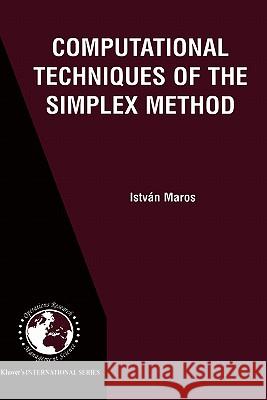Computational Techniques of the Simplex Method » książka
Computational Techniques of the Simplex Method
ISBN-13: 9781402073328 / Angielski / Twarda / 2002 / 325 str.
Linear Programming (LP) is perhaps the most frequently used optimization technique. One of the reasons for its wide use is that very powerful solution algorithms exist for linear optimization. Computer programs based on either the simplex or interior point methods are capable of solving very large-scale problems with high reliability and within reasonable time. Model builders are aware of this and often try to formulate real-life problems within this framework to ensure they can be solved efficiently. It is also true that many real-life optimization problems can be formulated as truly linear models and also many others can well be approximated by linearization. The two main methods for solving LP problems are the variants of the simplex method and the interior point methods (IPMs). It turns out that both variants have their role in solving different problems. It has been recognized that, since the introduction of the IPMs, the efficiency of simplex based solvers has increased by two orders of magnitude. This increased efficiency can be attributed to the following: (1) theoretical developments in the underlying algorithms, (2) inclusion of results of computer science, (3) using the principles of software engineering, and (4) taking into account the state-of-the-art in computer technology.
Theoretically correct algorithms can be implemented in many different ways, but the performance is dependent on how the implementation is done. The success is based on the proper synthesis of the above mentioned (1-4) components. Computational Techniques of the Simplex Method is a systematic treatment focused on the computational issues of the simplex method. It provides a comprehensive coverage of the most important and successful algorithmic and implementation techniques of the simplex method. It is a unique source of essential, never discussed details of algorithmic elements and their implementation. On the basis of the book the reader will be able to create a highly advanced implementation of the simplex method which, in turn, can be used directly or as a building block in other solution algorithms.











